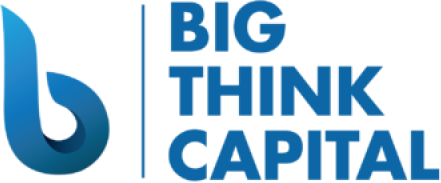Optimizing Your Business Financing in an Inflating Economy
Estimated reading time: 5 minutes
- Understand the inflation landscape
- Improve your business credit score for better loan terms
- Explore various SBA loan options tailored to your business needs
- Leverage digital cash flow tools for streamlined financial management
- Build solid relationships with lenders to enhance borrowing ease
Table of Contents
- Understanding the Inflation Landscape
- Improving Your Business Credit Score
- Navigating SBA Loans in a High Inflation Economy
- Leveraging Digital Cash Flow Tools
- Building a Sound Relationship with Banks
- Practical Takeaways for Business Owners Exploring Financing
- Conclusion
Understanding the Inflation Landscape
Inflation, as measured by the Consumer Price Index (CPI), has shown an upward trend since the beginning of 2022, due to various factors including supply chain issues and rising energy prices. As we move further into 2025, understanding how inflation impacts your business is essential. Higher inflation often leads to increased interest rates as lenders adjust to mitigate their risk.
Key Inflation Indicators for Businesses
- Current Inflation Rate: According to the Bureau of Labor Statistics, inflation hovers around 4-5% in early 2025, down from earlier peaks but still impacting buying power and borrowing costs. (Source: Bureau of Labor Statistics)
- Interest Rates: As the Federal Reserve continues to manage inflation, interest rates are expected to remain elevated, impacting loan affordability.
- Consumer Spending Trends: Monitoring shifts in consumer behavior can provide insights into demand for your products or services.
Improving Your Business Credit Score
A strong business credit score is a vital asset in an inflating economy. Lenders have tighter criteria, so improving your credit profile can increase your chances of securing favorable loan terms.
Steps to Enhance Your Business Credit Score
- Regularly Check Your Credit Reports: Obtain your business credit reports from agencies like Dun & Bradstreet, Experian, and Equifax. Look for inaccuracies and dispute them promptly.
- Pay Bills on Time: Consistently meet payment deadlines. Late payments can severely impact your credit score.
- Manage Credit Utilization: Keep your credit utilization below 30%. This means not over-relying on credit cards and maintaining a good balance between available credit and used credit.
- Establish Good Relationships with Lenders: Building rapport with financial institutions can lead to better financing options. Regular communication and transparency can work in your favor.
Navigating SBA Loans in a High Inflation Economy
The Small Business Administration (SBA) offers various loan products that can support your business in these challenging times. Understanding your options can significantly enhance your financing strategy.
Popular SBA Loan Products
- SBA 7(a) Loans: The most common SBA loan type, ideal for a variety of business needs, including working capital. For 2025, terms and interest rates may be influenced by inflation.
- SBA CDC/504 Loans: Designed for purchasing fixed assets like real estate and equipment, this loan can be beneficial as long-term rates may be advantageous compared to short-term borrowing.
- SBA Microloans: Ideal for smaller funding needs and businesses looking for a manageable amount of capital.
Tips for Navigating SBA Loans
- Prepare Thorough Documentation: A well-prepared business plan can strengthen your application by clearly outlining your strategy and how the funds will be utilized.
- Understand Your Financing Needs: Identify how much you need to borrow and for what purpose. This clarity will help you choose the right SBA loan option.
- Explore Alternative Financing: In addition to SBA loans, consider other financing options if funding needs are urgent. Working capital advances and lines of credit from reputable brokers like Big Think Capital can provide swift access to funds.
Leveraging Digital Cash Flow Tools
In an era where cash flow management is crucial, digital tools can help you streamline your financial processes, enhancing visibility and control over money management.
Key Digital Cash Flow Tools
- Accounting Software: Tools like QuickBooks or FreshBooks can help track invoices, expenses, and financial reports, improving the overall financial health of your business.
- Cash Flow Management Apps: Apps such as Float or Pulse allow businesses to project future cash flow needs and manage cash on hand effectively.
- Digital Payment Platforms: Solutions like PayPal, Stripe, or Square make it easier to collect payments and manage transactions efficiently, reducing the impact of delays on your cash flow.
Benefits of Digital Cash Flow Tools
- Enhanced Efficiency: Automating accounting tasks saves you time and reduces the risk of errors.
- Better Insights: Real-time financial data provides insights into trends and patterns, enabling proactive decision-making.
- Streamlined Operations: Opt for integrated systems that connect with other business tools to facilitate better cash flow and financial management.
Building a Sound Relationship with Banks
Establishing trust with financial institutions can ease the borrowing process in an inflating economy. Here are some strategies to foster these relationships:
- Consistent Communication: Regularly update your bank about your business situation, especially regarding growth and financial challenges. This builds transparency and trust.
- Seek Financial Guidance: Don’t hesitate to ask for advice regarding financing options. A bank that understands your business can offer tailored solutions.
- Showcase Your Business Acumen: Present a comprehensive business plan that clearly outlines your vision, market positioning, and growth strategies during discussions.
Practical Takeaways for Business Owners Exploring Financing
- Invest Time in Your Credit Score: A strong credit score can significantly enhance your chances of receiving favorable loan terms, especially in a high inflation environment.
- Explore Multiple Financing Options: Consider a mix of funding sources including SBA loans, alternative lending, and cash flow tools to ensure financial flexibility.
- Utilize Digital Solutions: Leverage digital cash flow tools to gain visibility into your financial health—this will empower you with insights to navigate economic challenges more effectively.
Conclusion
Navigating an inflating economy requires strategic financial planning and a proactive approach to managing your small business’s funding needs. By improving your credit score, understanding your SBA loan options, and leveraging digital cash flow tools, you can not only survive but also thrive in these economic conditions.
At Big Think Capital, we are committed to helping you secure the financing you need to keep your business moving forward. Consider reaching out to our funding experts who can guide you through the funding landscape tailored to your specific needs.
If you want to learn more about optimizing your business finances, visit us at bigthinkcapital.com or speak with one of our funding specialists today.
FAQ
- How can I check my business credit score?
- What are the typical terms of SBA loans?
- What digital cash flow tools are recommended for businesses?
How can I check my business credit score?
You can check your business credit score by obtaining reports from credit reporting agencies like Dun & Bradstreet, Experian, and Equifax.
What are the typical terms of SBA loans?
SBA loan terms vary based on the specific loan product but generally range from 5 to 25 years for repayment, with competitive interest rates.
What digital cash flow tools are recommended for businesses?
Recommended digital cash flow tools include accounting software like QuickBooks and cash flow management apps such as Float and Pulse.






